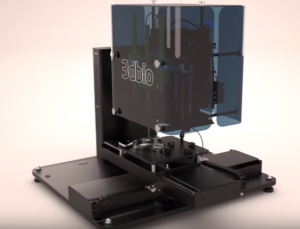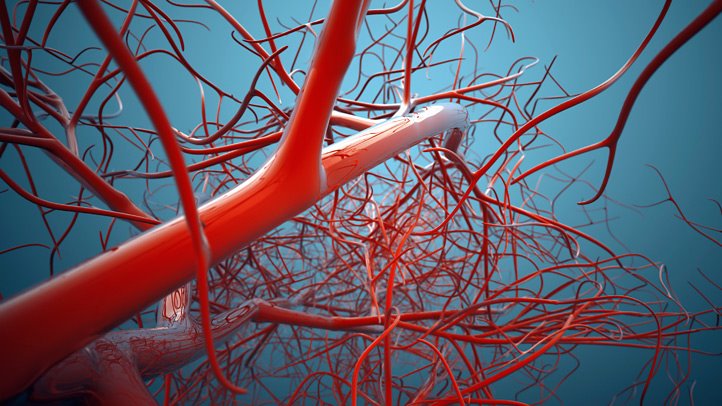3D bioprinting is a hot term right now, but many people aren’t sure exactly what it’s all about. Bring up bioprinting to someone who is only marginally familiar with it, and their response is likely to be, “Oh, that’s where they’re trying to print organs and stuff, right?” Well…yes, that is one of the ultimate goals of bioprinting. Most people working in the space like to talk about the dream of eliminating donor waiting lists, and creating brand new organs from a patient’s own cells, greatly reducing the risk of rejection. But the day that we see a beating 3D printed heart implanted into the chest of a living human being is still several years away.
Organ transplants are not the be-all, end-all of 3D bioprinting, however. Many people, unless they’re familiar with the industry, are unaware of just how much is being done with the technology already, and how many people are being helped by it, either directly or indirectly. Here are just some of the ways in which bioprinting is already impacting people.
Pharmaceutical Testing
There are many reasons why new drugs take so long to get approved for the market. One of them is that testing drugs on animal tissue is different from testing it on human tissue. A drug can work perfectly on an animal, but fail on a human – it’s inevitable that that should happen sometimes, as our systems process things differently than those of mice. But companies such as Organovo have developed 3D bioprinted human kidney and liver tissue – and yes, Organovo ultimately wants to be able to transplant working 3D printed livers into humans, but in the meantime, the company has made tremendous strides using its 3D printed tissue for pharmaceutical testing.Testing drugs on actual human tissue can give researchers a real idea of how the drugs will react in a human system, whether they’ll be effective and if they’ll cause any sort of harmful effects. 3D printed tissue also eliminates the need for testing on animals at all, which is a bonus for those animals.
3D Printed Cartilage and Bone
Much research has gone into the 3D printing of 3D printed bone and cartilage. Last year, Australian researchers successfully transplanted 3D printed knee cartilage into sheep, paving the way for human trials and commercialization. While it’s not yet possible to 3D print a functioning organ for human transplant, great progress has been made in treating diseases like arthritis by 3D printing new cartilage. Using a patient’s own stem cells, scientists hope to be able to 3D print pieces of cartilage and transplant them into a diseased or injured joint, where they will integrate with the body, grow and ultimately heal the affected area. This hasn’t actually been done to a human yet, but applications like this are much closer over the horizon than, say, a 3D printed heart.3D printed bone is also being studied as a way to replace bone that has been lost due to injury or illness. Severe conditions resulting in the loss of bone, if they can be treated at all, are typically treated with bone grafts, which can cause complications or rejection, and may be impossible simply because the patient doesn’t possess enough bone to heal a particular defect. 3D printed bone, again, can be created from a patient’s own cells, making it far less likely to be rejected. It can be 3D printed in any shape or size to match the defect and integrate with existing bone to heal it.
3D Printed Patches
Perhaps we can’t implant a 3D printed organ yet, but work has been done toward 3D printed patches to repair damaged organs, such as hearts after a heart attack. Progress has been made toward getting these 3D printed cell patches to vascularize, meaning that they can form their own blood vessel networks and survive inside the body.
Disease Research
Some diseases are difficult to study because of the lack of access to the affected area, such as the placenta. But a bioprinted placenta allowed scientists to research the dangerous condition preeclampsia more thoroughly than ever before and even come up with potential treatments. As bioprinting progresses, 3D printed organs will lead to better research and treatments even before they can be implanted into humans.
3D Printed Organs
 Yes, it may be a long time before organs can be 3D printed and implanted into humans – but they have been, in a few cases, successfully transplanted into animals. A mouse with a 3D printed ovary successfully gave birth to multiple babies, and before that 3D printed thyroid glands were transplanted into mice. Again, there’s a long way between mice and humans, but these cases show that 3D printed organs are a possibility and that they could perhaps be made to function inside the body. In each case, the researchers made known their intentions to eventually transfer this technology to humans. 3D printed, transplantable human organs are likely going to be part of the future – it’s just a matter of when.
Yes, it may be a long time before organs can be 3D printed and implanted into humans – but they have been, in a few cases, successfully transplanted into animals. A mouse with a 3D printed ovary successfully gave birth to multiple babies, and before that 3D printed thyroid glands were transplanted into mice. Again, there’s a long way between mice and humans, but these cases show that 3D printed organs are a possibility and that they could perhaps be made to function inside the body. In each case, the researchers made known their intentions to eventually transfer this technology to humans. 3D printed, transplantable human organs are likely going to be part of the future – it’s just a matter of when.
Discuss this and other 3D printing topics at 3DPrintBoard.com or share your thoughts below.
Subscribe to Our Email Newsletter
Stay up-to-date on all the latest news from the 3D printing industry and receive information and offers from third party vendors.
You May Also Like
Gorilla Sports GE’s First 3D Printed Titanium Cast
How do you help a gorilla with a broken arm? Sounds like the start of a bad joke a zookeeper might tell, but it’s an actual dilemma recently faced by...
Nylon 3D Printed Parts Made More Functional with Coatings & Colors
Parts 3D printed from polyamide (PA, Nylon) 12 using powder bed fusion (PBF) are a mainstay in the additive manufacturing (AM) industry. While post-finishing processes have improved the porosity of...
$25M to Back Sintavia’s Largest Expansion of Metal 3D Printing Capacity Since 2019
Sintavia, the digital manufacturing company specializing in mission-critical parts for strategic sectors, announced a $25 million investment to increase its production capacity, the largest expansion to its operations since 2019....
Velo3D Initiates Public Offering in a Bid to Strengthen Financial Foundations and Drive Future Growth
Velo3D (NYSE: VLD) has been among a number of publicly traded 3D printing firms that have attempted to weather the current macroeconomic climate. After posting a challenging financial report for 2023,...


































